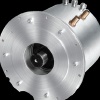|
Situational Analysis for the Electric Vehicle Industry
Electricity may be the only fuel for land transportation that can substantially replace oil products
while continuing to provide for the amount of movement of people and freight that is essential for
modern society. This paper focuses on a particular part of this potential transformation: the use of
electric traction in vehicles other than those in which electricity is generated by on-board fuel cells.
More specifically, it concerns battery-electric and hybrid-electric vehicles, including hybrid-electric
vehicles whose batteries can be charged from the grid (plug-in hybrids). The paper has been
prepared to aid discussion at a visioning session to be held on June 26, 2008, in preparation for
development of an Electric Vehicle Technology Road Map.
The paper begins by stressing the timeliness of consideration of electric traction. Overwhelmingly,
motorized transportation depends on internal combustion engines (ICEs) fuelled by oil products.
With the prospect that world supply of oil may soon not keep up with demand, there is urgency in
considering alternatives. Electric traction is superior to traction dependent on ICEs in every respect
except one: the energy density of the fuel as it can be stored on board a vehicle. The low energy
density of batteries allowed ICE-based traction—fuelled by high-density, highly portable oil
products—to prevail during the 20th century, notwithstanding ICE-based traction’s numerous
disadvantages, chiefly air pollution and noise.
As concerns about oil production have grown over the last few decades, so has the energy density
of available batteries. Nickel metal hydride (Ni-MH) batteries provide a three- to fourfold
improvement over lead-acid batteries. This development has enabled the emergence of hybrid
automobiles with electric motors that supplement or provide all traction and ICE-driven generators
that power electric motors or charge batteries, or both. The next stage of development is the plugin
hybrid, with a battery that can be charged from the grid or by an on-board generator, thereby
allowing much more of the traction to be electric.
Acceptable performance by plug-in hybrids will likely require better batteries; acceptable
performance by battery-electric vehicles will certainly need them. They are becoming available in
the form of lithium-based batteries, which have roughly twice the energy density of NiMH batteries.
Much smaller lithium-based batteries than those required for automobiles have widespread
application in electronic devices, chiefly laptop computers, but there are challenges in scaling up
this type of battery to automotive applications. The longest part of this paper concerns batteries.
This part includes details of the matters just touched on and a range of other matters including cost
and the roles of market participants.
Another substantial part of the paper concerns the electric vehicle industry, with a focus on
identifying participants and the considerable range of market perspectives available at this time of
rapid industrial repositioning. Another focus is on identifying actual and prospective Canadian
actors in the electric vehicle and related markets. Today, the greatest interest is in various types of
hybrid ICE-electric vehicle. This could well be displaced by interest in pure battery-electric vehicles,
or the two could coexist and together challenge the hegemony of pure ICE vehicles.
A final section sets out Canada’s many assets in relation to the further development of electric
vehicle technology and notes some requirements for this development.
read more
|














